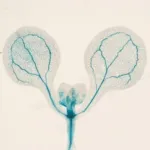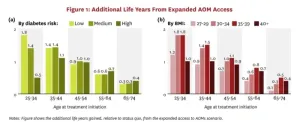(Press-News.org) COLUMBUS, Ohio – Researchers have uncovered a more efficient way to turn carbon dioxide into methanol, a type of alcohol that can serve as a cleaner alternative fuel.
In the lab, synthesizing methanol can be extremely difficult, due to the extremely complex reaction pathway needed to select for it. Previous attempts by the same team to manufacture this valuable liquid fuel from carbon dioxide have used a combination of cobalt phthalocyanine (CoPc) molecules and electricity, but this method is inefficient as only about 30% of the carbon dioxide is converted to methanol.
To better scale up methanol production, the team in this study added a second material, nickel tetramethoxyphthalocyanine (NiPc-OCH3), to the nanotube catalyst where the reaction takes place. They discovered that adding this second molecule can catapult methanol production efficiency up to 50%, about 66% better than any other known process.
“This catalyst system is one of the very few that can produce methanol at such high selectivity,” said Robert Baker, co-author of the study and a professor in chemistry and biochemistry at The Ohio State University.
Enhancing methanol production would not only allow scientists to make the liquid faster and more cheaply but also help them limit the amount of unwanted waste products. More importantly, having steady access to such a flexible renewable resource could transform many aspects of daily life, including the transportation sector, said Baker.
“Methanol is a really desirable product for CO2 reduction because it has such a high energy density,” he said. “It’s a great molecule – of all the possible products of CO2 reduction, methanol is an excellent candidate for use as an alternative fuel.”
The study was recently published in Nature Nanotechnology.
To confirm their findings, scientists used a technique called sum-frequency generation vibrational spectroscopy to analyze where carbon dioxide molecules were binding and how they were moving during their reaction.
When carbon dioxide is introduced to NiPc-OCH3, researchers can see that it becomes carbon monoxide before the catalytic reaction turns it into methanol.
In this case, the team saw that the carbon nanotubes, which held the two catalysts in place and helped electricity flow more smoothly through the reaction, influenced the carbon dioxide molecules’ movements. These tubes essentially act as a highway that ferries the reaction intermediates from one catalyst site to the next during this process.
“The dual nature of the nanotube catalysts causes the process to work extremely efficiently,” said Baker.
Since this new process of methanol generation does require a large quantity of carbon dioxide, efforts to scale it up for commercial use would likely have to be used in tandem with carbon capture technologies that can remove harmful greenhouse gases from the atmosphere and sequester them elsewhere. “Capturing and converting carbon directly to a fuel would be one of humanity’s best possible options,” said Baker.
What’s more, the understanding gained in this study about how creating dual catalysts from nanoscale building blocks can likely pave the way for other types of sustainable technologies, including opportunities for researchers to engineer brand new types of catalysts and chemical processes, said Baker.
“Now we have the tools to understand how when you put different nanoscale components together in the right architectures, you can create new, more efficient systems,” he said. “It’s a really exciting time for this kind of research.”
The study was supported by the National Science Foundation and the Yale Center for Natural Carbon Capture. Co-authors include Quansong Zhu from Ohio State; Alvin Chang and Zhenxing Feng from Oregon State University; Huan Li, Zhan Jiang and Yongye Liang from the Southern University of Science and Technology; and Jing Li, Seonjeong Cheon, Yuanzuo Gao, Bo Shang, Conor L. Rooney, Longtao Ren, Shize Yang and Hailiang Wang, all from Yale University.
#
Contact: Robert Baker, Baker.2364@osu.edu
Written by: Tatyana Woodall, Woodall.52@osu.edu
END
Leveraging the power of AI and machine learning technologies, researchers at Weill Cornell Medicine developed a more effective model for predicting how patients with muscle-invasive bladder cancer will respond to chemotherapy. The model harnesses whole-slide tumor imaging data and gene expression analyses in a way that outperforms previous models using a single data type.
The study, published March 22 in npj Digital Medicine, identifies key genes and tumor characteristics that may determine treatment success. The ability to accurately anticipate ...
Anthrax, an infectious disease caused by the bacterium Bacillus anthracis, is often treatable in its early stages. But once the disease has progressed beyond the “point of no return” after just a few days, patients are almost certainly doomed.
In a new Nature Microbiology study, University of Pittsburgh researchers show that a cocktail of growth factors reversed would-be lethal cell damage in mice with anthrax, suggesting that this approach could be adapted for use in patients beyond the brink.
“While only a few people die from anthrax in the United States each year, there is always the concern ...
If you just put away your phone to read this, chances are you’re not alone. Our phones are an endless source of distraction, and we interact with them every four to six minutes. This is often driven by habit as well as notifications, leading to a disrupted flow of activity while we’re trying to be productive.
A new study published in Frontiers in Computer Science investigated if placing smartphones just out of our reach while we’re at work influenced device use for activities not related ...
Population surveillance. The carrying of identification while traveling. Add to that the public presence of diverse religions and it sounds like 2025, but this was life in the Ottoman Empire 200 years ago. Yet this seeming tolerance of non-Muslim faiths was in fact tied to the first two aspects, according to research by Osaka Metropolitan University Associate Professor Masayuki Ueno.
The Ottoman Empire lasted from around 1300 until 1922, and at various points in its history ruled present-day Turkey, Egypt, Greece, Hungary, and beyond. In the wake of the 1821 Greek revolt, the Ottoman Empire instituted ...
Banning smartphone and social media access alone fails to equip children for healthy use of technology, argues a group of international experts in The BMJ today.
They say the focus should shift to a rights based approach, underpinned by age appropriate design and education, that protects children from harm while developing skills to help them participate in a digital society.
Bans on smartphone and social media access have been advocated in many countries to protect children from harm despite ...
Ikoma, Japan—In an era where climate change threatens food security, scientists worldwide are searching for reliable ways to improve crop production. Extreme weather and shifting seasonal patterns can disrupt traditional agricultural cycles, making technologies that regulate the timing of plant growth invaluable for farmers worldwide.
Plant growth and development are dependent on many factors such as the environment, photoperiod, and genetics. Flowering is an important event in a plant’s life ...
A new USC Schaeffer Center white paper finds expanded access to anti-obesity medications would lead to significant increases in life expectancy and disease-free years while generating a substantial societal return on investment, even after accounting for treatment costs.
More than 4 in 10 U.S. adults have obesity, which is linked to increased risk of over 200 diseases — including heart disease, diabetes, cancer and dementia — and costs society $260 billion annually to treat. Highly effective new anti-obesity medications can be a powerful tool against chronic disease, but fewer than one-third of health insurers cover them amid concerns about upfront ...
Ikoma, Japan—Throughout evolution, plants have continuously adapted to survive in changing environments. Apart from complex structural changes, plants have also developed various defense strategies against herbivores, including tougher protective layers, thorns, and chemical deterrents. Delving deeper into the evolution of defense mechanisms, a research team led by Assistant Professor Makoto Shirakawa from Nara Institute of Science and Technology (NAIST), identified a surprising genetic adaptation in the Brassicales plant order. In these cruciferous ...
New York, NY — The American Federation for Aging Research (AFAR), is pleased to announce the 2025 recipients of three of its annual Scientific Awards of Distinction: David B. Allison, PhD, will receive the Irving S. Wright Award of Distinction; Daniel W. Belsky, PhD, will receive the Vincent Cristofalo Rising Star Award in Aging Research; and Arlan Richardson, PhD, will receive the George M. Martin Lifetime Achievement in Mentoring Award.
The Irving S. Wright Award of Distinction is named in honor of AFAR’s founder and recognizes exceptional contributions to basic ...
RIVERSIDE, Calif. -- Vaping during pregnancy is becoming more common, but its impact on early human development is not well understood. A new study by scientists at the University of California, Riverside, now reports that the flavor chemical menthol used in electronic cigarettes could pose risks to a developing baby.
The study, published in STEM CELLS Translational Medicine, used human embryonic stem cells, or hESCs, to characterize early stages of embryonic development and examined how low concentrations of menthol affect important cellular processes.
The ...




